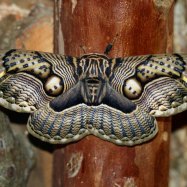
English Setter
Male: 24-27 inches, Female: 23-26 inches
Looking for a friendly and athletic dog to add to your family? Consider an English Setter! These medium-sized canines can reach 24-27 inches in length for males and 23-26 inches for females. They belong to the Canidae family and can be found all around the world. With their beautiful coat and friendly disposition, English Setters make great companions for any family.
Animal Details Summary:
Common Name: English Setter
Kingdom: Animalia
Habitat: Open fields, meadows, forests
The Majestic English Setter: A True Companion for Adventure
The English Setter, scientifically known as Canis lupus familiaris, is a graceful and athletic breed that has been captivating hearts since the 1700s. With their elegant coat and friendly demeanor, it's no wonder that they have been a beloved companion to hunters, families, and royalty for centuries.The History and Origin of the English Setter
The English Setter was first developed in England in the 1700s, originally as a gun dog for bird hunting. They were bred from various land spaniels and setters, which gave them their strong sense of smell and keen hunting abilities English Setter. They were later crossed with the Spanish Pointer, which introduced the signature long and silky coat of the English Setter.It wasn't until the 1800s that the English Setter was officially recognized as a breed in England. They quickly gained popularity as a skilled hunting dog and were also favored by the aristocracy for their regal appearance. In 1874, the English Setter was officially recognized by the American Kennel Club and became a beloved breed in the United States as well.
The Physical Characteristics of the English Setter
The English Setter is a medium-sized breed, with the average height of males ranging from 24-27 inches and females ranging from 23-26 inches. They typically weigh between 65-80 pounds for males and 45-70 pounds for females, making them a sturdy and athletic companion.Their coat is one of their most distinguishing features, with long and silky hair that comes in white with markings in different colors such as black, orange, or lemon. The coat is designed to protect the English Setter during their hunting expeditions, and it requires regular grooming to keep it shiny and tangle-free.
Their body shape is also designed for hunting, with a medium build and strong muscles that allow them to run and work tirelessly for hours Eastern Fence Lizard. The English Setter's body is also adapted for agility, with a deep chest and a long, feathered tail that helps them navigate through rough terrain.
The Personality and Temperament of the English Setter
English Setters are known for their friendly and outgoing personality. They are highly social animals and thrive on human companionship, making them excellent family pets. They are gentle and patient with children, which makes them a great choice for families with kids.Due to their strong hunting instincts, English Setters may be reserved or aloof with strangers. However, with proper training and socialization, they can become more welcoming to new people. They are also known for their intelligence and are eager to please, which makes them relatively easy to train.
Their hunting background also means that English Setters have a high energy level and require regular exercise and mental stimulation. They make excellent companions for active individuals or families who enjoy outdoor activities such as hiking, running, or hunting. However, they are also adaptable to apartment living, as long as they receive enough physical and mental exercise.
The Ideal Environment for an English Setter
English Setters thrive in open fields, meadows, and forests. They were originally bred to be hunting dogs, so they are most comfortable in an environment where they can run and explore freely. They are not well-suited for city living and do best in suburban or rural areas with access to outdoor space.Because of their sociable nature, English Setters do not do well with a lot of time spent alone. They are most content when they are with their human family and do not enjoy being left alone for long periods. They also do not do well in outdoor kennels because they crave human companionship and attention.
The Diet of an English Setter
As carnivorous animals, English Setters have specific dietary needs to maintain their health and energy levels. A high-quality dog food that is suitable for hunting breeds is recommended, and it's essential to consult with a veterinarian to determine the appropriate portions for your dog based on their size, age, and activity level.It's crucial to also monitor the English Setter's food intake, as they have a tendency to overeat. This can lead to weight gain and potentially other health issues. As with any dog, it's essential to always provide access to fresh, clean water.
The Distribution and Popularity of the English Setter
The English Setter is a well-known and beloved breed worldwide. Due to their versatile nature and suitability as both a hunting dog and a family pet, they can be found in various countries and locations.However, the English Setter's popularity has fluctuated over the years, with a decline in the mid-20th century due to the rise of more modern hunting breeds. Fortunately, they have regained their popularity in recent years and are now a well-regarded and recognized breed in the dog community.
Challenges and Threats Facing the English Setter
As with any purebred animal, there are inherent challenges and threats facing the English Setter. Some of these challenges include:- Genetic health problems - due to their popularity, English Setters can be prone to certain genetic health issues. Some of the common health issues in this breed include hip dysplasia, elbow dysplasia, and epilepsy.
- Overbreeding and unethical breeding practices - as with any popular breed, there is a risk of overbreeding and unethical breeding practices that can lead to health and behavioral problems in the English Setter.
- Accidental injuries - due to their love for physical activities, English Setters can be prone to accidental injuries, such as torn ligaments or muscle strains. Pet owners must take proper precautions to ensure the safety of their dog during physical activities.
In Conclusion
The English Setter is a majestic and versatile breed that has been a faithful companion to humans for centuries. With their regal appearance, friendly personality, and impressive hunting skills, they make an excellent addition to any active and loving family.However, it's crucial to do thorough research and consider the challenges and responsibilities that come with owning this breed. With proper care, training, and love, the English Setter can be a loyal and adventurous companion for years to come.

English Setter
Animal Details English Setter - Scientific Name: Canis lupus familiaris
- Category: Animals E
- Scientific Name: Canis lupus familiaris
- Common Name: English Setter
- Kingdom: Animalia
- Phylum: Chordata
- Class: Mammalia
- Order: Carnivora
- Family: Canidae
- Habitat: Open fields, meadows, forests
- Feeding Method: Carnivorous
- Geographical Distribution: Worldwide
- Country of Origin: England
- Location: Various
- Animal Coloration: White with markings in different colors (e.g., black, orange, lemon)
- Body Shape: Medium-sized, athletic
- Length: Male: 24-27 inches, Female: 23-26 inches

English Setter
- Adult Size: Male: 55-80 pounds, Female: 45-70 pounds
- Average Lifespan: 10-14 years
- Reproduction: Sexual
- Reproductive Behavior: Mating season occurs twice a year
- Sound or Call: Barks, howls
- Migration Pattern: Non-migratory
- Social Groups: Pack
- Behavior: Intelligent, friendly, energetic, and sociable
- Threats: None in particular
- Conservation Status: Not evaluated
- Impact on Ecosystem: N/A
- Human Use: Companion dog, Show dog, Hunting dog
- Distinctive Features: Feathered coat, long ears, and expressive eyes
- Interesting Facts: The English Setter is known for its exceptional sense of smell and is used as a hunting dog for pointing and retrieving game.
- Predator: No significant natural predators

Canis lupus familiaris
The Loyal & Energetic English Setter: A Beloved Companion, Show Dog, and Hunter
The English Setter, with its striking feathered coat, long ears, and expressive eyes, is a beloved breed of dog among many owners. This breed has a long history, known for its intelligence, friendliness, and energetic nature. Native to the British Isles, the English Setter has been traditionally used as a hunting dog, showcasing its exceptional sense of smell and agility. However, due to its versatile and affectionate nature, it has also become a popular companion and show dog PeaceOfAnimals.Com.In this article, we will delve deeper into the unique features and characteristics of the English Setter, from its size and lifespan to its behavior and role in human society. We will also uncover some interesting facts, debunk myths, and explore the breed's impact on the ecosystem.
A Stature of Strength and Grace
The English Setter, also known as the Laverack Setter, is a medium to large-sized breed of dog. Males typically weigh between 55-80 pounds, with females slightly smaller at 45-70 pounds. They stand at an average height of 24-27 inches at the shoulder. With a graceful and athletic build, this breed exudes strength and agility.A Lifespan of Loyalty
The average lifespan of an English Setter is 10-14 years, but with proper care and nutrition, some have been known to live even longer. As with any breed, regular vet checkups, a balanced diet, and proper exercise are key to keeping the English Setter healthy and living a longer life.A Natural Reproductive Behavior
As a sexual species, the English Setter's reproductive behavior is triggered by hormonal changes Eared Grebe. The female enters her reproductive cycle twice a year, known as the mating season. During this time, she becomes receptive to males and can produce a litter of 6-8 puppies, on average. Male English Setters will also actively seek out females during this time, displaying dominant and protective behaviors.A Symphonic Chorus of Sound
This breed of dog is not known to be excessive barkers, but they do have a range of vocalizations ranging from barks, howls, and yelps. These can indicate a variety of things such as excitement, warning signals, or communication with other dogs. Their melodious and harmonic barking has earned them the nickname "the symphony in motion."A Nomadic Homebody
Unlike some migratory species, English Setters are non-migratory animals, meaning they do not undertake long-distance movements from one location to another. Instead, they live in a specific habitat, usually with their human owners.A Pack Culture
English Setters are known to be social animals that thrive in a pack environment. This pack can consist of other dogs or humans, and they are happiest when surrounded by companions. In a home setting, they are known to form lasting bonds with their owners and are exceptionally loyal and protective of their pack.A Glimpse into Their Behavior
The English Setter is renowned for its intelligence, friendly demeanor, and high energy. This combination makes them excellent companions for families with children or active individuals. They are also highly trainable, making them ideal for obedience and agility competitions. Due to their hunting instincts, they may have a tendency to chase small animals, making it essential to socialize and train them from a young age.Threats & Conservation Status
With no significant natural predators, the English Setter does not face any imminent threats in the wild. In fact, the breed is considered to be healthy and well-adapted to its natural habitat. However, it is important to note that responsible and ethical breeding practices should be followed to prevent any potential health issues. The breed is not currently evaluated by any major conservation bodies, but it is always important to be mindful of the impact we have on any species' natural habitat.A Companion, Show Dog, and Hunter
One of the most unique aspects of the English Setter is its versatility and adaptability. They make excellent companion dogs, providing love, loyalty, and entertainment to their owners. Their friendly and sociable nature also makes them well-suited for therapy work. In addition, their beautiful feathered coat and elegant movements have made them popular show dogs, winning many hearts and awards.Their innate hunting abilities also make them a popular choice among hunters, particularly for game birds. This breed is known for its exceptional sense of smell and is trained to point and retrieve game for their handlers.
Distinctive & Expressive
One cannot talk about the English Setter without mentioning its distinctive features that set it apart from other breeds. The breed's signature coat is often described as "feathered," with long, silky hair that requires regular grooming to keep it in good condition. Their long ears are also a notable characteristic, which not only adds to their graceful appearance but also enhances their sense of hearing. And one cannot forget their expressive eyes, which often reflect their emotions and make them irresistible to their owners.Myths & Facts
Like many dog breeds, there are several myths surrounding the English Setter. One of the most common myths is that they require excessive amounts of exercise. While they are energetic breeds that enjoy daily walks and playtime, they are not as high-energy as some people may believe. In fact, they are content spending time indoors with their families.Another myth is that they are not suitable for apartments or smaller living spaces. While they do enjoy ample space to run and exercise, as long as they are provided with daily exercise and mental stimulation, they can adapt well to apartment living.
Human & Ecosystem Impact
The English Setter is an example of how humans have not only domesticated but also enhanced a breed's natural abilities for various purposes. As hunting dogs, they have had a significant impact on human society, providing essential skills and companionship. However, their impact on the ecosystem is minimal, as they do not prey on any significant species and do not disrupt the balance of their natural habitat.The Ultimate Companion & Hunter
In conclusion, the English Setter is an intelligent, friendly, and energetic breed that has won the hearts of many. Their versatility and adaptability have allowed them to thrive in various roles, from a loyal companion to a skilled hunter. With a lifespan of loyalty and an affectionate nature, they make excellent family pets and are sure to bring joy and love to any home. So, if you are looking for a furry friend with a combination of brains and beauty, the English Setter may be the perfect addition to your family.

The Majestic English Setter: A True Companion for Adventure
Disclaimer: The content provided is for informational purposes only. We cannot guarantee the accuracy of the information on this page 100%. All information provided here may change without prior notice.












